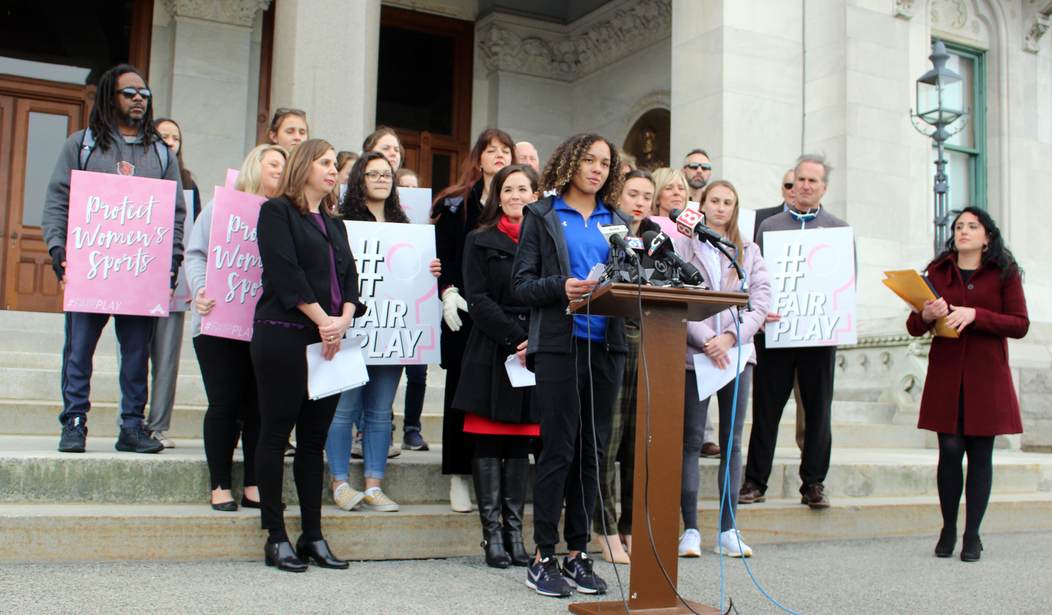The children had gathered that day for the first time in their first-grade classroom. At the top of the agenda: learn how to do simple problems in addition and subtraction.
After the teacher had reviewed some basic principles of arithmetic, she asked one of the students: "Do you know what one plus one equals?"
The little girl responded: "Two."
The teacher then admonished her: "No, it equals three."
The girl was astonished, but the teacher was adamant. "One plus one equals three," the teacher insisted.
But the little girl was very bright. She held up her right hand where the teacher could see it. "Teacher," she said, grabbing her index finger, "that is one."
Then the girl reached over and grabbed the next finger. "That is another one," she told the teacher. "So now I am holding two."
"I told you and you need to listen," the teacher admonished the little girl. "The fact of the matter is that one plus one equals three -- and you need to accept that."
The little girl looked at the teacher in astonishment and disbelief.
"One plus one equals three," the teacher repeated. "That is the official policy of this school district."
This may not have started happening yet in America's first-grade classrooms, but a similar phenomenon is already taking place in high school athletic competitions.
In 2013, the Connecticut Interscholastic Athletic Conference adopted what is referred to as its "Revised Transgender Participation Policy."
This "policy," it says, "addresses eligibility determinations for students who have a gender identity that is different from the gender listed on their birth certificates."
"Therefore, for purposes of sports participation, the CIAC shall defer to the determination of the student and his or her local school regarding gender identification," it continues. "In this regard, the school district shall determine a student's eligibility to participate in CIAC gender specific sports team(s) based on the gender identification of that student in current school records and daily life activities in the school and community at the time that sports eligibility is determined for a particular season.
Recommended
"Accordingly, when a school district submits a roster to the CIAC, it is verifying that it has determined that the students listed on a gender specific sports team are entitled to participate on that team due to their gender identity," says the policy.
In plain English: A boy who "identifies" as a girl is "entitled" to compete against girls on the girls' "gender specific sports team."
Yes, in Connecticut high school sports, one plus one equals three. Or a boy is a girl if he says he is.
How has this impacted girls' sports in Connecticut?
The case of Soule v. Connecticut Association of Schools is now working its way up through the federal courts. The plaintiffs are four biological females who were high school track-and-field athletes.
The Alliance Defending Freedom, which is advancing the female athletes' case, filed a brief last year in the U.S. Court of Appeals for the Second Circuit that summarized the basic facts behind it.
"Biological males, if allowed to compete, will dominate women's sports," said the ADF brief. "That is exactly what happened in Connecticut's high school track and field."
In 2017, said the ADF brief, "a biological male athlete who identified as female started running in women's track and field."
In 2018, the ADF noted, "another biological male athlete who identified as female, switched from competing in boys' track to girls' track events."
The result? Over the course of two years, the ADF informed the court, "two biologically male athletes, won 13 girls' state-championship titles and occupied more than 68 opportunities to advance to and participate in exclusive higher-level competitions -- opportunities that would otherwise have gone to females."
These two biologically male athletes, ADF told the court, "won 13 out of 14 'girls' championships, leaving a female runner to win just one. (Needless to say, in the boys division, males won all 14 parallel 'boys' championships.)"
The U.S. Court of Appeals for the Second Circuit issued its opinion in this case last week, dismissing the case brought by the biologically female athletes.
"Plaintiffs allege that the Policy violates Title IX of the Education Amendments of 1972 ... because the participation of transgender females in girls' high school athletic events results in 'students who are born female' having materially fewer opportunities for victory, public recognition, athletic scholarships, and future employment 'than students who are born male,'" the court summarized in its opinion.
"To remedy the alleged Title IX violations," the court said, "Plaintiffs requested damages and two injunctions -- one to enjoin future enforcement of the Policy and one to alter the records of certain prior CIAC-sponsored girls' track events to remove the records achieved by two transgender girls, who intervened in this action."
The court's opinion meticulously refers to two types of "girls." One it calls "transgender girls" or "girls who are transgender." The other it calls "cisgender girls" or "girls who are cisgender."
In other words, in this court's arithmetic, two distinct sexes equal one.
Noting that the biological females who brought this case did sometimes defeat the "transgender girls" they were forced to compete against, the court concluded: "Plaintiffs' theory of injury in fact -- that the Policy deprived them of a 'chance to be champions' -- fails because they have not alleged a cognizable deprivation here."
The trajectory of the transgender movement is driving America away from a society based on objective truth -- where a boy is a boy, for example -- toward a society where what we pretend is true depends on what those in authority demand.




















Join the conversation as a VIP Member